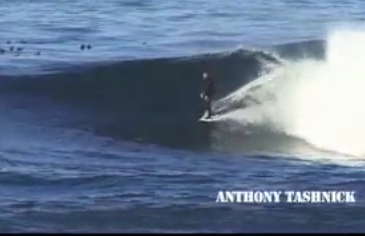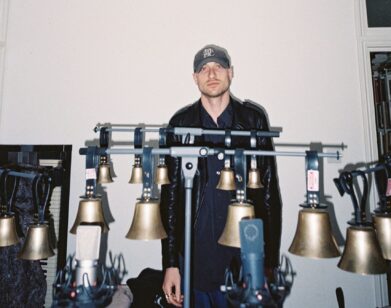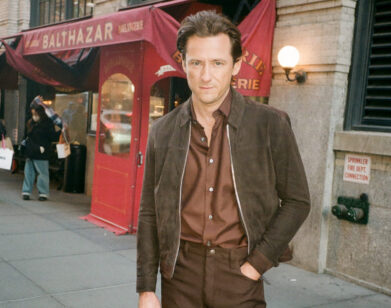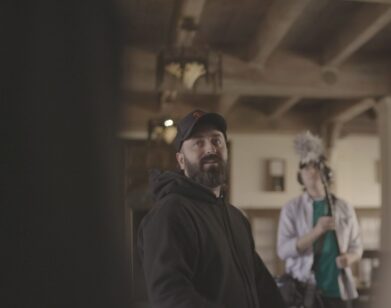Ari Marcopoulos’ Oceanic Feeling

Ari Marcopoulos is no stranger to danger on a board. In “Claremont,” a film produced by designer Adam Kimmel, Marcopoulos directed skateboarder Noah Sakamoto and Patrick Rizzo filming each other on a ten-minute downhill slope—in powder blue suits and into oncoming traffic, no less. Kimmel also has introduced Marcopoulos to the NRDC (National Resources Defense Council), and specifically a project for the landmarking and preservation of coastlines. Marcopoulos only began surfing in the last few years, and by his account, “I suck. It is a hard art to master.” While he vows to “take fewer photos, make fewer films, and spend more time in the water,” in the meantime, he’s putting his interests to combined good use: After attending an NRDC meeting he decided to tell the story of the coast through its experts and cultural ambassadors, surfers. The result, “Seventy-One Percent of Earth,” was all the more difficult project than skateboarding because, as Marcopoulos says, “The road does not move!”
The nine-minute film features extensive surfing shots, and Marcopoulos captures textured walls of waves both above and below surface level. He and his friend, Josh Livingstone, rigged a balloon camera to get the views of the legendary Steamer’s lane in Santa Cruz, and Surfer Brian Conley shot inside the waves. Marcopoulos interviews legends of Big Wave surfing Twiggy Baker, Conley, Greg Long, Rusty Long, Frank Solomon and Anthony Tashnick, about the changes they’ve seen in reefs. The voiceover by narrator Peter Coyote, alternately ominous and optimistic for popular agency, warns that the ocean could become “a giant pool of jellyfish and bacteria,” and Marcopoulos says of his subjects, “A surfer in polluted waters is like a canary in a coal mine.” In Southern California, where the population is enormously dense, beaches close after rainstorms because of run-off. And when they’re not closed, it’s difficult to gauge the long-range health issues pollution causes for surfers. Surfing spots are themselves less and less healthy; and while dead reefs might still create a wave, they’re more fragile. As dead reefs fall to the ocean bottom, surfing spots disappear. Follow the surfers, at they know know the way the wind blows; or, as Marcopoulos tells it, “Surfers are scientists when it comes to analyzing when and where waves will hit. They have their priorities straight.”






